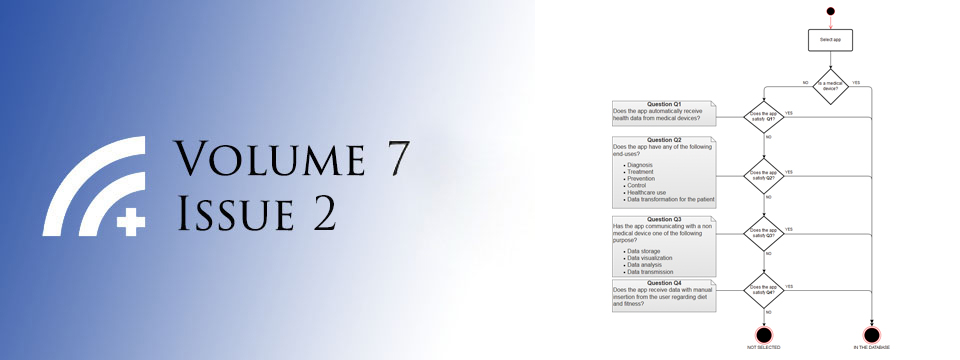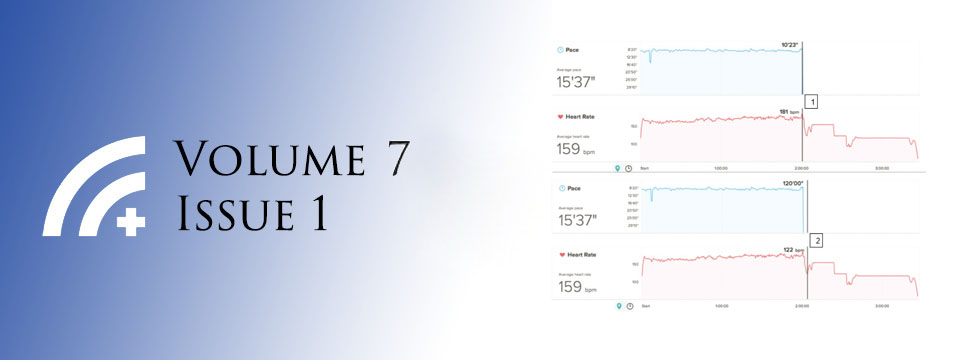Posted on Dec 2, 2012 in News |
 The Editorial Board at the Journal of Mobile Technology in Medicine is proud to present Volume 1, Issue 4S, published in December 2012. As media partners of the mHealth Summit 2012, Journal MTM is proud to present a special edition of the Journal presenting all the conference abstracts. We look forward to your article submissions.
The Editorial Board at the Journal of Mobile Technology in Medicine is proud to present Volume 1, Issue 4S, published in December 2012. As media partners of the mHealth Summit 2012, Journal MTM is proud to present a special edition of the Journal presenting all the conference abstracts. We look forward to your article submissions.
Volume 1, Issue 4S Contents
Abstracts
WelTel Retain: A randomized controlled trial protocol of a text-messaging intervention to improve patient retention in pre-antiretroviral therapy HIV care
Mia Van Der Kop, David Ojakaa,Lennie Bazira, Lehana Thabane, Lilian Mbau, Helen Gakuruh Koki Kinagwi, Edward Mills, Carlo Marra, Richard Lester
Mobile Technology As A Promising Tool For Health Research In The Social Sciences
Marcos Reyes-Estrada, Marinilda Rivera-Diaz,NelsonVaras-Diaz
BreathEasy: A Smartphone App to Manage Asthma in an Underserved Population
BarbaraL Massoudi, StephenRothemich
Universal Depresion Prevention via Mobile Phones
R.Whittaker, S.Merry, K.Stasiak, H.Mc-Dowell, I.Doherty, M.Shepherd, E.Dorey, S.Ameratunga, A.Rodgers
Efficacy of IVR-Based Brief Intervention for Alcohol Problems
GailL. Rose
IN Touch: impact of and lessons learned from an mHealth intervention for overweight and obese youth
Katherine Kim, Christina Sabee, Holly Logan
Feasibility of a Virtual Exercise Coach to Promote Walking in Community-Dwelling Persons with Parkinson’s Disease
Nancy K Latham, TerryEllis, Tamara De Angelis, Katy Hendron, CathiA Thomas, MarieSaint-Hilaire, Timothy Bickmore
A Tablet Game for Risk Reduction and HIV Prevention in Adolescents
Kimberly Hieftje, Lindsay Duncan, Benjamin Sawyer, Sabrina Haskell, Lynn Fiellin
Wrist-based accelerometers successfully differentiate walking from other activities
AmyPapadopoulos, Nicolas Vivaldi, Christine Silvers
SOLVE-IT: Socially Optimized Learning in Virtual Environments: A Web-Delivered HIV Prevention 3D Game Intervention for Young At-Risk MSM
LynnCarol Miller, Paul Robert Appleby, AlexandraN Anderson, StephenJ Read, John L Christensen, StacyMarsella
NightWatch 2.0: The Role of Mobile Phones in Malaria BCC
Hannah Bowen
Using Mobile Technology to Promote Healthy Behaviors in Teens
Misbah Mohammed, Meghan Searl, Khinlei Myint-U, Joseph Kvedar, Kamal Jethwani
Utilizing mHealth Recruitment & Retention Strategies in an RCT with Young Children with Type 1 Diabetes
Victoria Owen, Lauren Pascarellal, Linda Herbert, Fran Cogen, Randi Streisand
Use of parent consultants in a telehealth intervention for parents of children newly diagnosed with Type 1 diabetes
Randi Streisand, Linda Herbert, Victoria Owen, Maureen Monaghan
Use of Booster Calls in a Behavioral Intervention for Adolescents with Type 1 Diabetes
Rachel Sweenie, Linda Herbert, Eleanor Macky, Clarissa Holmes, Randi Streisand
mHealth: An Effective Education Channel for Hard-to-Reach Ethnic Minority Populations in Vietnam
Le NgocHue, LuongChi Thanh, Tonvan der Velden, Le NgocBao, MarionMcNabb
Web-based Clinical Decision Support to Improve the Quality of Tobacco Use Treatment in Dental Clinics
Shelly Tseng, Jannat-Khan Hager
Tailored SMS Messaging to Increase Exercise in Cancer Survivors: A Qualitative Pilot Study
Karen Basen-Engquist, Melissa Karlsten
A Computer Adaptive Testing (CAT) approach to Patient Reported Outcomes (PROs) for mobile devices
Michael Bass, Maria Varela Diaz
Electronic Decision Support for Cardiovascular High-Risk Patients Management in Tibet, China
MaoyiTian, JiakeChen, LiqunXu, HaoChen, RuilaiLi, KaWingCho, YangfendWu, LijingL Yan
Twitter + Health: The psychosocial impact of short-form text-based messages on wellbeing
Lauren Wagner
TextTB: A parallel design randomized control pilot study to evaluate acceptance and feasibility of a patient-driven mobile phone based intervention to support adherence to TB treatment
Sarah Iribarren, Christina Chirico, Mirta Echevarrria, Daniel Cardinali
Improving health awareness through mobile based health messages in Bangladesh
Mafruha Alam, Ananya Raihan, Atik Ahsan
Mobile phone ownership and widespread mHealth use in 168,231 women of reproductive age in rural Bangladesh
Alain B. Labrique, Shegufta S. Sikder, Sucheta Mehara, LeeWu, Rezwanul Huq, Hasmot Ali, Parul Christian, Keith West
The Effects of amHealth Intervention on Asthma Symptom Control in Inner-City Teens
Lola Awoyinka
A Cross-Language Mobile Resource for Accessing MEDLINE/PubMed Based on an Open- Source, Crowdsourced Controlled Medical Vocabulary for the Philippines
Raymond Francis R. Samiento, Fang Liu, Paul Fontelo
Evaluation of a SMS Medication Reminder System to Improve Medication Adherence in African Americans with Uncontrolled Hypertension
Lorraine Buis, Loren Schwiebert, Nancy Artinian, Hossein Yarandi, Lindsey Hirzel
High Tuberculosis Treatment Adherence Obtained Using Mobile Phones for Video Directly Observed Therapy: Results of a Binational Pilot Study
Richard Garfein, Kelly Collins, Fatima Munoz, Kathleen Moser, Paris Cerecer-Callu, Mark Sullivan, Ganz Chokalingam, Phillip Rios, Maria Luisa Zuniga, Jose Luis Burgos, Timothy Rodwell, Maria Gudelia Rangel, Kevin Patrick
Effect of Home Blood Glucose Telemonitoring with Self-Care Support on Glycemic Control in Pregnancy
AG Lagain, DS Feig, R Fung, I Bahinskaya, D Ng, P Picton, JA Cafazzo
Satisfying Clinical Research Guidance and Regulations for mHealth Technologies
Christopher Whalen
Smartphone-delivered mobile HIV Risk Reduction Education in Opioid Dependent Individuals
Karran APhillips, David HEpstein, Jia-LingLin, Mustapha Mezghanni, MassoudVahabzadeh, Kenzie L Preston
Evaluation of a Mobile Diabetes Self-Management Platform: A Pilot Case Study with Pediatric Users
T. Tran, K. Rudolph, PORBETA, S. Jaladi, S. Kumar, S. Kim, R. Padman
Tailored Rapid Interactive Mobile Messaging (TRIMM) for Weight Management Among Underserved Adults
Michael K. Lin, Lawrence J.Cheskin
I’ll text you if there’s a problem: How the Canadian Cancer Society used live text chat to help you g adults quit smoking
Trevorvan Mierlo
Using social networking technologies for mixed methods HIV prevention research
Sean D Young, Devan Jaganath
Are We Sure That Mobile Health Is Really Mobile?
Brie Turner-McGrievy, Deborah Tate
A Qualitative Analysis of Emergency Department Patients’ Experiences with TExT-MED, a Text-message Based mHealth Program to Improve Diabetes Management
Elizabeth Burner, Sanjay Arora, Elena Taylor, Michael Menchine
Prescribe Wellness Automated Digital Intervention (ADI) Effectiveness to Increase Medication Adherence
Terry Olson
Results of Communication Enhancement Used in eIMCI Decision Support for the Treatment of Children Under Five in Tanzania
Seneca Perri, Bethany Hedt, Thomas Routen, AmaniShao, ClotildeRambaud-Althaus, NdeniriaSwai, Marc Mitchell
SMS Text Messages to Monitor the Coverage during Polio Supplementary Immunization Activities in Karachi, Pakistan
Momin Kazi, Shariq Khoja, Murtaza Ali, Asad Ali
Use of SMS text for Maternal and Child Health Surveillance in resource constrain setting
Momin Kazi, Murtaza Ali, Anita Zaidi
We look forward to hearing from readers in the comments section, and encourage authors to submit research to be considered for publication in this peer-reviewed medical journal.
Yours Sincerely,
Editorial Board
Journal of Mobile Technology in Medicine
Posted on Dec 1, 2012 in Conference |
Momin Kazi1,Murtaza Ali1, Anita Zaidi1
1Aga Khan University, Pakistan
Journal MTM 1:4S:46, 2012
DOI:10.7309/jmtm.67
Abstract
Background: Department of Paediatrics and Child Health, Aga Khan University, Karachi, conducts active demographic surveillance system (DSS) for maternal and child health at a peri urban site of Karachi, covering an area of 8.1 sq. miles and having a population of around 275,000. The maternal mortality rate (MMR) is around 200 per 100,000 live births. There are around 300 neonatal and 150 post neonatal deaths in the study catchment area. We introduced a two way SMS based pregnancy and birth registration system in the surveillance catchment area.
Method: Community health workers (CHWs) visit household on quarterly bases in the study catchment area to identify new pregnancies and follow the pregnant woman until their pregnancy outcome. As soon as CHW identifies a pregnant woman, she sends a SMS message to the server. Based on this registration, system generates follow up details of each pregnant woman; giving priority to third trimester. Once live birth identified CHW sends a SMS to the server which alerts the team to examine the neonate.
Results: This system helps in early identification and monitoring of pregnant woman and newborns. Also by sending unique structure identifier through SMS to the server, our CHWs and study staff can get desired information of the pregnant woman and children less than 5 years of age in the study surveillance area.
Conclusion: Through SMS registration we have an extra layer for identifying maternal death and pregnancy outcome. Identifying a woman / child information through SMS is also quite helpful.
Posted on Dec 1, 2012 in Conference |
Momin Kazi1,Shariq Khoja1,Murtaza Ali1, Asad Ali1
1Aga Khan University, Pakistan
Journal MTM 1:4S:45, 2012
DOI:10.7309/jmtm.66
Abstract
Background: Karachi is the only major city in the world that has not been able to interrupt wild type polio transmission. Supplementary Immunization Activities (SIAs) are an important tool by which countries have sought to increase polio immunization coverage. However, more than 50 SIAs have so far failed to interrupt the transmission of poliovirus in Karachi. Cell phone use has seen a tremendous rise in Pakistan with more than 110 million subscribers. In this study, we are using the wide network of cell phone to monitor the coverage rates during SIAs in Karachi, Pakistan.
Methods: 3535 children less than 5 years old from all over Karachi and three high risk towns where included in the baseline data.The baseline survey included information on basic demographics, short message service (SMS) language preferences and household’s GPS coordinates on a smart phone. After each SIA, a randomly selected 840 households are contacted via SMS inquiring if the vaccinator came to their house and whether their child received vaccine dose or not. In case there is no reply by SMS, same information is captured by phone call. The study will continue till 2013.
Results: A total of 3562 children consented for the baseline study. Out of 840 SMS sent after the first second and third SIA 62 (7%), 189 (23%) and 158 (19%) respectively replied to the SMS. 561 (67%), 374 (44%) and 394 (47%) respectively replied to phone call and 217 (27%), 277 (33%) and 288 (34%) respectively did not reply to SMS or phone call.
Conclusion: The coverage data obtained through the SMS text and phone call replies matches with the data collected through ground team monitoring and other methods like LQAs. SMS based surveillance can be a way to determine population level coverage of polio immunization in a very short time period and this system can be upgraded to country level.
Posted on Dec 1, 2012 in Conference |
Seneca Perri1, Bethany Hedt2, Thomas Routen3, AmaniShao4, Clotilde Rambaud-Althaus5, Ndeniria Swai6, Marc Mitchell2
1University of Utah, Salt Lake City, UT, United States, 2Harvard School of Public Health, Boston, MA, United States, 3Thingsprime, Freiburg, Germany, 4National Institute of Medical Research, Dar es Salaam, United Republic of Tanzania, 5Swiss Tropical and Public Health Institute, Basel, Switzerland, 6City Medical Office of Health, Dar es Salaam, United Republic of Tanzania
Journal MTM 1:4S:44, 2012
DOI:10.7309/jmtm.65
Abstract
The use of standardized decision support protocols have been shown to improve the quality of health service delivery in pediatric patients of low-resource populations if appropriately followed. However, even when clinical services are good, low levels of health literacy levels among caretakers of children may compromise the fulfillment of treatment plans. This study examines whether the use of mobile technology can improve the impact of counseling of children’s caretakers and result in better understanding of what needs to be done at home after the clinical visit and whether this results in better care of the child.
Utilizing mobile technology, we attempted to address the gap in communication during pediatric health care visits by incorporating specific, customized communication prompts into an eIMCI mobile decision support protocol. We utilized a randomized cluster design to include 310 participants from six municipal clinics in Dar es Salaam, Tanzania. The test arm of the study (electronic arm) included a 25-second video formatted for the mobile phone aimed at educating caretakers on relevant health information, embedded prompts within the protocol containing important messages for caretakers, and a customized summary screen compiling the results of the clinical encounter. The control arm (paper arm) provided equivalent information to the electronic counseling messages in written text as part of the protocol. The counseling delivered by health workers and resulting caretaker knowledge were evaluated by an observer and a short questionnaire of the caretakers after the clinic visit. Our research demonstrated that clinicians provided significantly more counseling to caretakers when using the electronic mobile protocol and caretakers were overall better able to recall what they were supposed to do when they returned home. We believe these results are highly valuable to the greater mHealth community seeking to improve the chain of health service delivery for low-resource populations.
Posted on Dec 1, 2012 in Conference |
Terry Olson1
1Prescribe Wellness
Journal MTM 1:4S:43, 2012
DOI:10.7309/jmtm.64
Abstract
Medication non-adherence is pervasive within all areas of the U.S. health care system. Non-adherence has been estimated to range between 17 and 80%: involving 38% of patients on short-term treatment, 43% of patients on long-term treatment, and 75% of patients instructed to make a lifestyle change (DiMatteo, 1994). Approximately 133 million Americans, almost half of the country’s population, live with at least one chronic disease (CDC, 2010). It is estimated that by 2020, 164 million people will be diagnosed with a chronic disease, and 24% of all Americans will have two or more chronic conditions (CDC, 2010). Improving medication adherence can have a great potential to contribute to effective chronic disease state management and overall better health outcomes.
Prescribe Wellness, LLC partnered with leading local pharmacies in the Greater Los Angeles area to create a supplemental Automated Digital Intervention (ADI) to be used with patient-centered Medication Therapy Management (MTM) sessions. This proprietary first generation ADI template, aimed to increase medication adherence through the pharmacy’s intervention process, sends out appropriate motivational, behavioral, and educational messages through timely and relevant communications using the Voice of Authority (VOA).
The purpose of this quantitative study was to determine whether a relationship exists between the PrescribeWellness’ ADI and patient medication adherence. The relationship between variables was examined by implementing descriptive statistics and Chi-squared analysis. Pharmacy patients (n=12) were taken through a standard MTM session followed by ADI voice messaging during the subsequent 90-day period. Results showed there was an association between PrescribeWellness’ ADI and patient medication adherence, as medication adherence rates increased from 66.7% to 85.7%. Additional findings showed there was an increase in adherence rates for those patients with chronic conditions of hyperlipidemia (60% to 93.3%), hypertension (76.2% to 90.5%) and diabetes (47.6% to 57.1%).
Posted on Dec 1, 2012 in Conference |
Elizabeth Burner,1Sanjay Arora,1 Elena Taylor,2 Michael Menchine1
1Keck Medical School of USC Department of Emergency Medicine 2USC Memory and Aging Center
Journal MTM 1:4S:42, 2012
DOI:10.7309/jmtm.63
Abstract
Background: In the United States, diabetes plagues Latinos, and their diabetes can be difficult to manage due to cultural, language and access barriers. The extent of benefits from mHealth technologies to improve the management of diabetes among low-income Latinos is currently unknown. Understanding the complex changes to self-efficacy and health beliefs can be difficult to measure quantitatively, especially in minority populations were traditional health belief models may not translate well culturally.
Methods: A text-messaged based educational and motivational program designed to improve disease knowledge, self-efficacy and glycemic control among low-income, inner-city Latinos was piloted for feasibility. Self-efficacy, diabetes knowledge and frequency of healthy behaviors were measured at the start and end of the trial. Focus groups were then convened to explore patient experiences with the program, and the program’s impact on patients’ self-efficacy and health beliefs. The findings of these sessions were used to reanalyze the quantitative data measured previously in the study.
Results: 23 patients were recruited for the feasibility study. Through qualitative analysis, we found thatmen and women had different information sources and differing self-efficacy towards diet management. Using this knowledge, the quantitative data gather was stratified by gender, and differential changes were noted between genders in diabetes knowledge, self-efficacy and healthy food choices.
Conclusions: Men and women have differences in self-efficacy towards diet management and information sources. These differences may affect the effectiveness of mHealth interventions to improve diabetes. Gender and culture should be considered when designing interventions to achieve maximal impact.
 The Editorial Board at the Journal of Mobile Technology in Medicine is proud to present Volume 1, Issue 4S, published in December 2012. As media partners of the mHealth Summit 2012, Journal MTM is proud to present a special edition of the Journal presenting all the conference abstracts. We look forward to your article submissions.
The Editorial Board at the Journal of Mobile Technology in Medicine is proud to present Volume 1, Issue 4S, published in December 2012. As media partners of the mHealth Summit 2012, Journal MTM is proud to present a special edition of the Journal presenting all the conference abstracts. We look forward to your article submissions.







